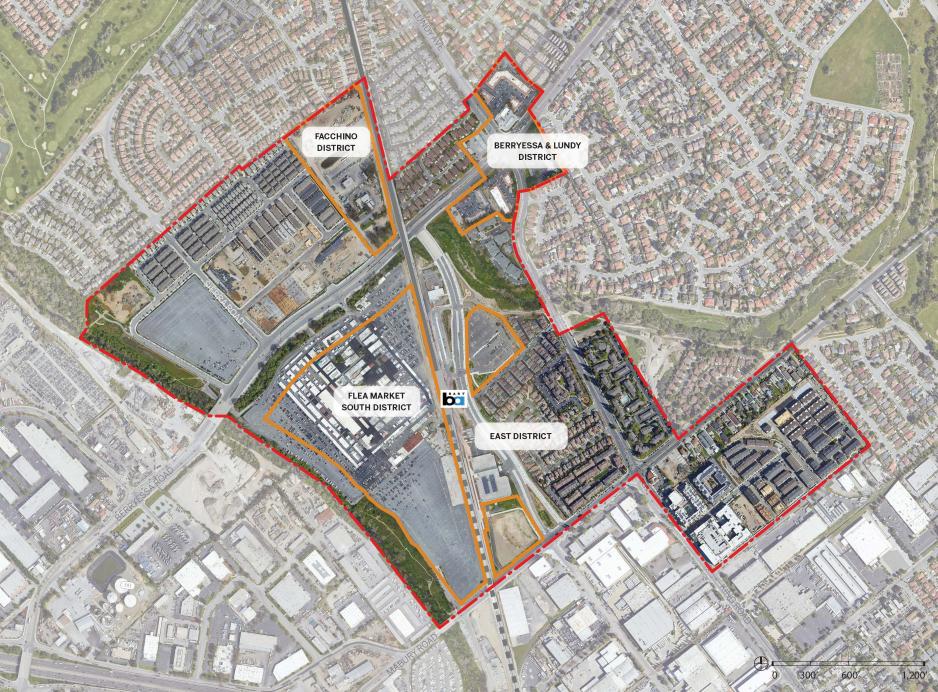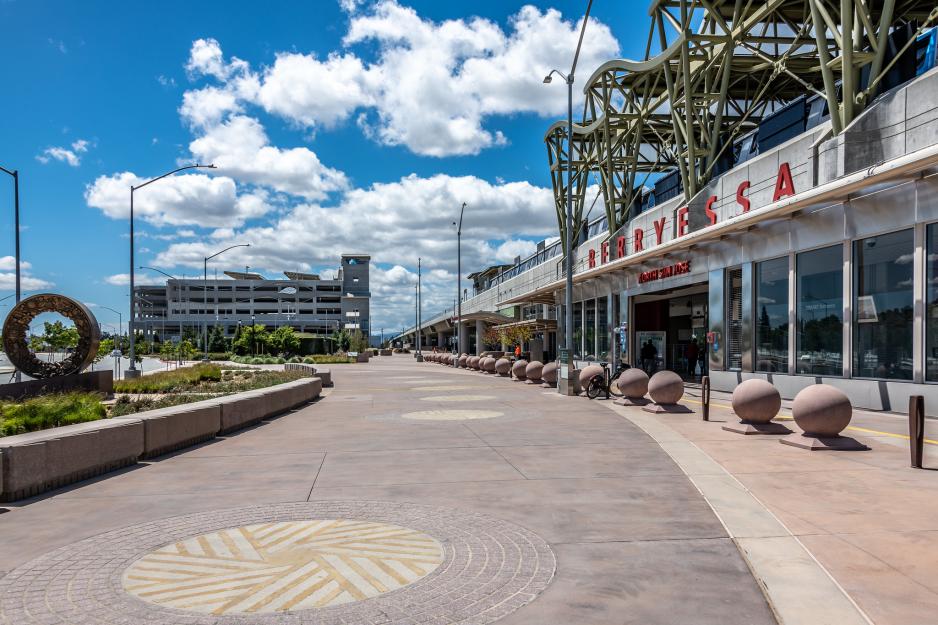Leverage investments in transit infrastructure by concentrating density where its users are best situated to shift from single-occupancy cars to buses and trains. This ties directly into the new 2022 MTC Transit-Oriented Communities Policy guidelines for conformance with regional initiatives.
- Density minimums or overlays can guide development in transit zones.
- The intensity of development (as measured in dwelling units per acre or floor-area ratio) should be proportional to its distance from transit.
- Incentive-based zoning can help concentrate mixed-use development in concentring rings around transit facilities.
Body
Parking at or near stations should be structured, leaving surface areas available for active uses, including community gathering.

